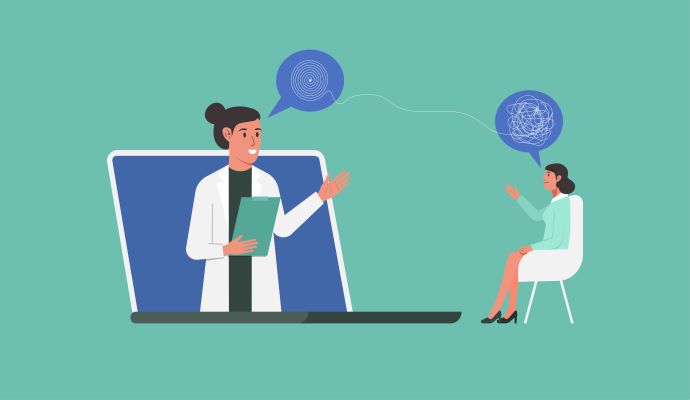Counties with Urgent Mental Healthcare Needs Face Telehealth Barriers
A new study reveals that US counties with low densities of mental healthcare resources also have a higher percentage of homes without broadband access.

Source: Getty Images
- Though telehealth can help expand mental healthcare access, United States counties where mental health resources are low tend to also lack broadband internet access, hampering telehealth use, according to recent research.
Published in the Nature Mental Health journal, the study aimed to determine the relationship between access to broadband internet and mental health resources and to quantify the association between social determinants of health (SDOH) and broadband access in the United States.
Many Americans do not have access to stable and reliable internet connectivity. Though a 2021 Federal Communications Commission (FCC) report states that fewer than 14.5 million Americans lack broadband access, independent research by BroadbandNow reveals that the figure is grossly undercounted, saying that at least 42 million Americans lack this access.
Following the onset of the COVID-19 pandemic, mental health issues soared nationwide. Healthcare providers and patients increasingly turned to telehealth services to meet this urgent need. Thus, the study authors examined geographic and socioeconomic disparities in broadband and mental healthcare access in the US.
For the study, the researchers used data from the FCC, the National Neighborhood Data Archive, the National Center for Health Statistics, and the US Census Bureau’s American Community Survey. They defined counties with low broadband access as “those in which the percentage of households without broadband was greater than the national median of 26.5 percent” and counties with high broadband access as “those in which the percentage of households without broadband was less than the national median.”
There was an average of 7.03 mental healthcare physicians, 10.86 non-physician mental health practitioners, 1.48 psychiatric and substance abuse hospitals, 1.18 inpatient psychiatric and substance abuse treatment facilities, and 12.33 outpatient facilities available per 100,000 members of the population across US counties.
However, US counties with low broadband access had reduced densities of mental health services, with an average of 3.63 mental healthcare physicians, 2.86 non-physician mental health practitioners, 1.33 psychiatric and substance abuse hospitals, 0.94 inpatient psychiatric and substance abuse treatment facilities, and 11.28 outpatient facilities available per 100,000 members of the population.
On the other hand, US counties with high broadband access had higher densities of mental health services, with an average of 7.43 mental healthcare physicians, 11.80 non-physician mental health practitioners, 1.50 psychiatric and substance abuse hospitals, 1.21 inpatient psychiatric and substance abuse treatment facilities, and 12.45 outpatient facilities available per 100,000 members of the population.
Further, researchers observed that among counties with low broadband access, 60.14 percent have no mental healthcare physicians, 73.81 percent have no non-physician mental health practitioners, 79.08 percent have no psychiatric and substance abuse hospitals, 84.62 percent lack inpatient psychiatric and substance abuse treatment facilities, and 30.01 percent lack outpatient facilities.
Researchers performed a secondary analysis, finding that broadband access is likely lower in rural areas and/or areas with high poverty rates.
“These findings underscore that, while telemedicine may mitigate many key barriers to in-person mental healthcare, lack of broadband access may present an additional barrier to care for individuals already living in medically under-resourced communities,” researchers concluded.
However, research also shows that simply increasing access to high-speed internet may not fully mitigate care gaps.
Published in JAMA Network Open, the study assessed how telehealth expansion and internet speed are associated with primary care use. The study included 172,387 Wisconsin Medicaid beneficiaries.
Though patients with access to high-speed interest had higher rates of telehealth uptake, stratification by internet speed “isolated the telehealth advantage for non-Hispanic Black and Hispanic individuals to those with HIS [high-speed internet],” researchers wrote.
